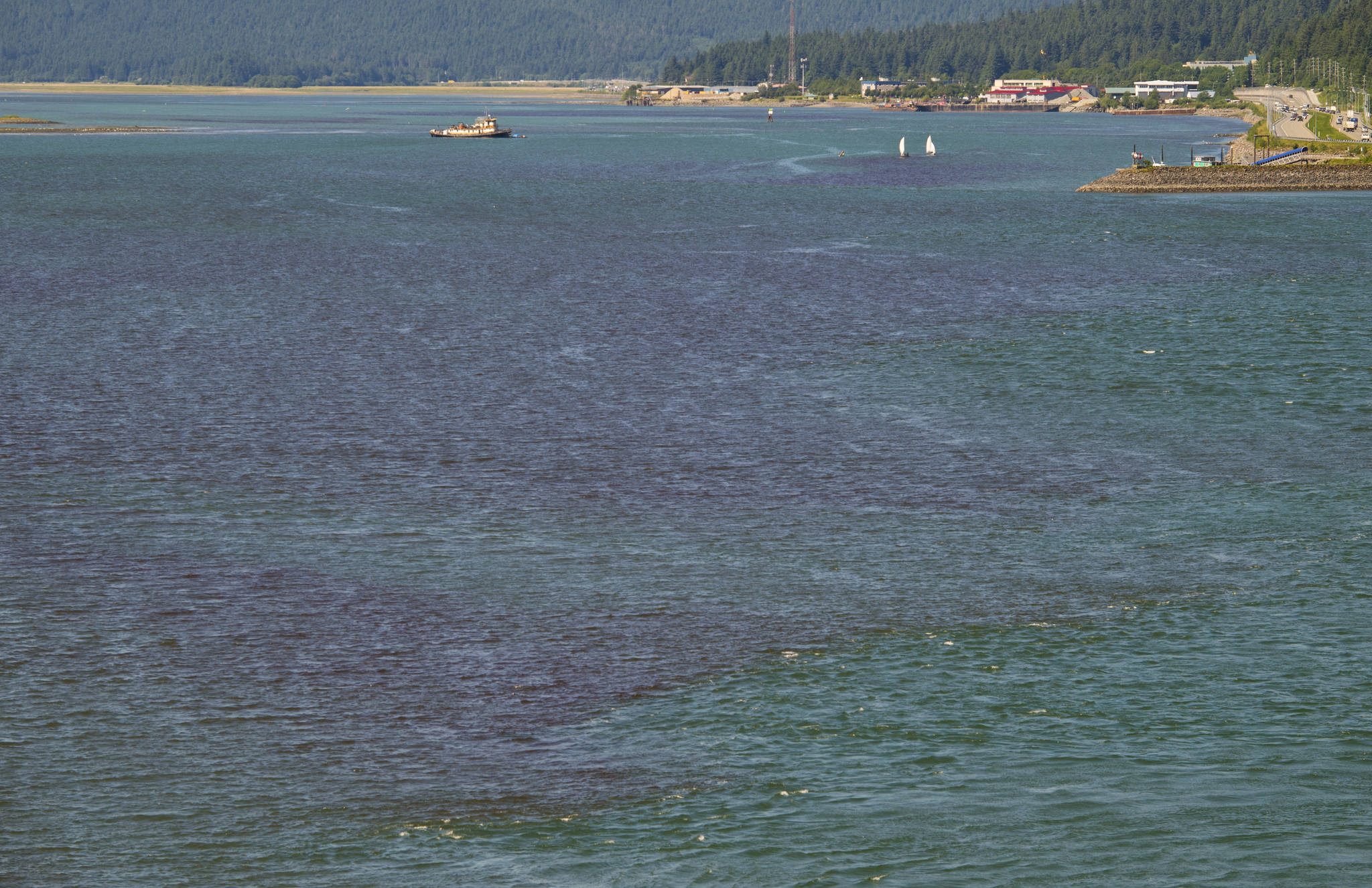Eric Prestegard saw it for the first time Sunday.
A shade of rust-colored red crept its way through the waters of Gastineau Channel as Prestegard, the executive director of Douglas Island Pink and Chum (DIPAC) Inc. watched and worried. This is a vital time of year for the hatchery, which is midway through its egg taking process, Prestegard said.
Two days prior to that, the Alaska Department of Environmental Conservation had gotten a call that something unusual was floating around in the channel. Dave Pikul, an environmental program specialist for the Southeast Region’s Spill Response Unit, went down to the water and took a look.
“It was pretty widespread,” Pikul said. “Our observations down at the shoreline identified it was not oil, but it was some kind of biological mass.”
Exactly what that biological mass is, however, is still yet to be determined. Kate Kanouse, a habitat biologist for the Department of Fish & Game, said the overriding current theory is that it’s an algae bloom, or algal bloom. An algae bloom is a rapid increase in the amount of algae in the water, usually brought on as a result of rising water temperatures.
“That’s the most likely cause,” Kanouse said. “We’ve had a nice warm summer and it fits the criteria of what we would see of an algal bloom. I wouldn’t expect it to be anything else, and I don’t expect it to be dangerous.”
Algae blooms can be harmful, but not all of them are, according to the National Ocean Service. Vera Trainer, a research oceanographer with Northwest Fisheries Science Center, said blooms can cause a lack of oxygen in the water, which can kill small fish. More commonly in Alaska, she said, blooms affect shellfish.
“The most common in Alaska that are known of right now are the paralytic shellfish poisoning events that are resulting in accumulation of toxins in shellfish that can then be dangerous to humans,” Trainer said.
Trainer said algae blooms in Alaska are old news, as Aleuts have known about toxic shellfish for generations. Trainer said people should pay attention to health authorities’ websites and announcements about shellfish.
For many in Juneau, the reddish hue of the water is a new sight. Prestegard said he can’t remember a time when algae or phytoplankton were this widespread, even in the hot summer of 2004.
As he’s watched from his spot along the channel, Prestegard said that so far, everything seems to be fine.
“We’ve observed it the last three days,” Prestegard said. “At this point, it doesn’t seem to be affecting our fish in any way, shape or form.”
Prestegard said they’re a bit concerned about their aquariums, though. While the fish seem to be holding up well, DIPAC employees aren’t certain that smaller animals will be so immune. Prestegard said the algae bloom — or whatever it might end up being — has not made its way right up to the hatchery quite yet, but they’re watching closely.
Trainer said blooms will likely become more and more common in Alaska as ocean temperatures continue to rise. As ice melts, she said, sunlight will penetrate the water easier and promote more growth among plant life such as algae.
“Certainly with warming water,” Trainer said, “there’s going to be a larger suite of algal bloom problems that can occur in Alaska.”
• Contact reporter Alex McCarthy at 523-2271 or amccarthy@juneauempire.com. Follow him on Twitter at @akmccarthy.

